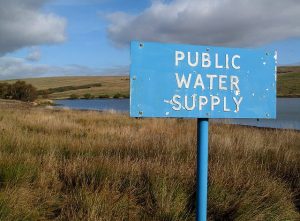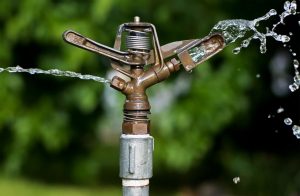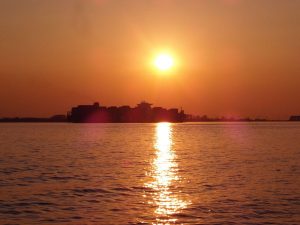 “When the well is dry, we learn the worth of water.” – Ben Franklin, Poor Richard’s Almanac 1733
“When the well is dry, we learn the worth of water.” – Ben Franklin, Poor Richard’s Almanac 1733
World Water Day is March 22, 2015, and the theme is Sustainable Development. But what exactly IS sustainable development? It was first defined by the Brundtland Commission in 1983:
- Sustainable development is development that meets the needs of the present without compromising the ability of future generations to meet their own needs.
More recently, University of Maryland School of Public Policy professor and former Chief Economist for the World Bank Herman E. Daly proposed the following three rules for sustainability:
- Renewable resources such as fish, soil, and groundwater must be used no faster than the rate at which they regenerate.
- Nonrenewable resources such as minerals and fossil fuels must be used no faster than renewable substitutes for them can be put into place.
- Pollution and wastes must be emitted no faster than natural systems can absorb them, recycle them, or render them harmless.
While sustainable development always includes the global effort to provide clean water and sanitation to the world’s population, it also requires developed nations to implement efficient technologies and to protect existing resources by addressing threats and incorporating conservation strategies into daily life. Consider these facts:
- Less than 1 percent of the world’s fresh water is usable in a renewable fashion
- The average person requires 1.3 gallons of water per day just to survive, while the amount of water needed for all daily tasks – like drinking, cooking, bathing, and sanitation – is 13 gallons
- The average American uses 65 to 78 gallons of water per day for drinking, cooking, bathing, and watering their yard; the average Dutch uses only 27 gallons per day for the same tasks
- The average Gambian uses only 1.17 gallons of water per day
 America is one of the world’s largest consumers of water, and to do our part towards sustainable development, we must begin by modifying our domestic water usage.
America is one of the world’s largest consumers of water, and to do our part towards sustainable development, we must begin by modifying our domestic water usage.
Efficiency – the Most Effective Method of Conservation
By implementing indoor residential conversation techniques, we could meet the water needs of over five million people by the year 2020, and by incorporating efficient irrigation techniques, we could save enough water to meet the needs of an additional 3.6 million people. In addition, if we were to also invest in our nation’s water infrastructure and supply to incorporate efficient technologies to reduce water loss, we would be able to meet all of our domestic water needs — agricultural, industrial, and residential. This would result in easing the stress on our natural resources as well as saving enough water to guard against another concern: climate change.
Climate Change in the United States – An Imminent Threat
 Climate change increases the risk of extreme weather, such as droughts and floods, and alters the timing and location of precipitation. For example, climate change has the potential to alter snowfall and snowmelt in the Rocky Mountains, Sierra Nevada, and Pacific Northwest. Any alteration in snowfall or snowmelt will cause changes in timing and volume of runoff, resulting in flooding in the winter and drought in the summer. In addition, coastal aquifers and water supplies in areas such as Cape Cod, Long Island, the coastal Carolinas, and central coastal California are extremely vulnerable to rising sea levels caused by climate change. Other products of climate change — such as higher water temperature in lakes and streams, melting permafrost, and reduced water clarity — have the potential to critically threaten fish and water-dwelling animals as well harm wetlands and other water habitats. Climate change has the potential to drastically alter our nation’s weather patterns and geological landscape, and any delays in addressing climate change and in planning effective strategies for the impending changes could severely threaten our nation’s water supplies. Clearly, addressing climate change now is one of the key components to sustainable development.
Climate change increases the risk of extreme weather, such as droughts and floods, and alters the timing and location of precipitation. For example, climate change has the potential to alter snowfall and snowmelt in the Rocky Mountains, Sierra Nevada, and Pacific Northwest. Any alteration in snowfall or snowmelt will cause changes in timing and volume of runoff, resulting in flooding in the winter and drought in the summer. In addition, coastal aquifers and water supplies in areas such as Cape Cod, Long Island, the coastal Carolinas, and central coastal California are extremely vulnerable to rising sea levels caused by climate change. Other products of climate change — such as higher water temperature in lakes and streams, melting permafrost, and reduced water clarity — have the potential to critically threaten fish and water-dwelling animals as well harm wetlands and other water habitats. Climate change has the potential to drastically alter our nation’s weather patterns and geological landscape, and any delays in addressing climate change and in planning effective strategies for the impending changes could severely threaten our nation’s water supplies. Clearly, addressing climate change now is one of the key components to sustainable development.
 While the global focus of sustainable development needs to be on providing access to clean water and sanitation for everyone, we also need to look within our own borders and change the way we think about water and our natural resources. Unless we institute positive change and focus on conservation by implementing efficient technologies and practices, we will likely find ourselves facing dire consequences. As Dr. Peter Gleick, president of the Pacific Institute, stated so eloquently, “The best way to solve emerging threats to the world’s fresh water is by rethinking how we use and manage our scarce resources. We must look at ways to increase our efficiency of use, instead of just building more dams and reservoirs. Improving the efficiency of our water systems, taking real steps to tackle global warming, and opening the policy debate over water to new voices can help turn the tide.”
While the global focus of sustainable development needs to be on providing access to clean water and sanitation for everyone, we also need to look within our own borders and change the way we think about water and our natural resources. Unless we institute positive change and focus on conservation by implementing efficient technologies and practices, we will likely find ourselves facing dire consequences. As Dr. Peter Gleick, president of the Pacific Institute, stated so eloquently, “The best way to solve emerging threats to the world’s fresh water is by rethinking how we use and manage our scarce resources. We must look at ways to increase our efficiency of use, instead of just building more dams and reservoirs. Improving the efficiency of our water systems, taking real steps to tackle global warming, and opening the policy debate over water to new voices can help turn the tide.”
We couldn’t have said it better.
REFERENCES:
www.awra.org
www.pacinst.org
